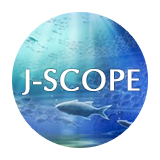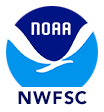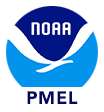Forecast Origin Dates
J-SCOPE forecast results for the simulation beginning in January of 2017 are shown in the first figure below. Each panel represents a two-month average for the region averaged over three model runs of the ensemble. Each panel represents a two-month average for the region, averaged over the three model runs of the ensemble. The panels directly under the climatology depict the relative uncertainty from the ensemble for the same time period.
One bias is known to exist in the model that impacts these forecasted SSTs. The short wave radiance is known to be too high (see 2013, Year in Review), which can contribute to forecast temperatures being too warm during summer.
For waters off the Washington coast, the forecast projects that SST will be near climatological SSTs until July (January - February, March - April, May - June,) with a slightly cooler SST than the climatology (~1 degree) forecast on the Washington shelf, and then become warmer than climatological SST for the late summer (July - August) of 2017. The relative uncertainty is very low (<10%) for the entire forecast.
For the waters off the Oregon coast, the forecast projects near climatological SSTs until July (January - February, March - April, May - June,) with a slightly warmer than climatological SST (~1 degree) forecasted on the Oregon shelf, and then become warmer than the climatology for the late summer (July - August) of 2017. The relative uncertainty is very low (<10%) for the entire forecast.
The SST forecasts using all three model runs of the ensemble for two point locations where buoys exist, Ćháʔba· off La Push, Washington, and NH-10 off Newport, Oregon, are shown at the bottom of the page. They both indicate warmer SSTs than the climatology during the summer upwelling season.
Finally, climatological cross-sections from the Newport Line in Oregon, as well as the Grays Harbor Line in Washington, are compared to the forecasted average of the ensemble members. The forecast projects that the temperatures for the upwelling season of 2017 will be higher than the climatology and extend down to over 200 meters depth below the surface covering much of the shelf in both Washington and Oregon.
We note that the NANOOS Climatology App shows that the NDBC buoys along the Washingotn and Oregon shelf are recording sea surface temperatures are nearly equivalent to the long-term averages since the start of 2017.
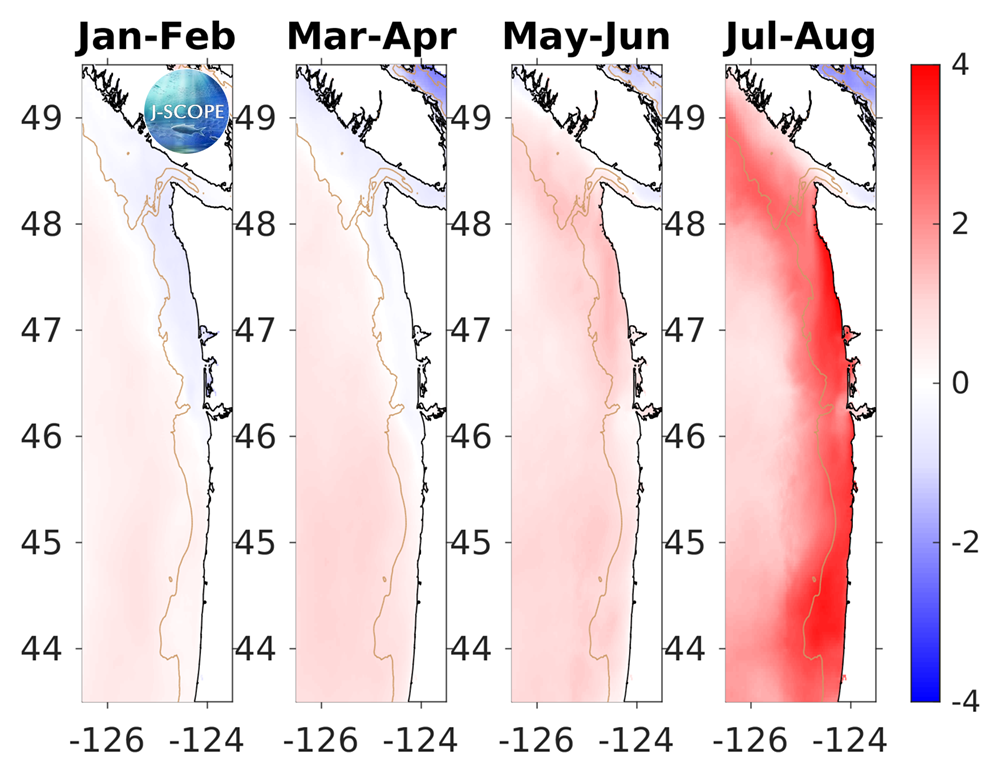
The modeled regional SST anomaly averaged over all three ensemble model runs and in time for (from left to right) January - February, March - April, May - June, and July - August.
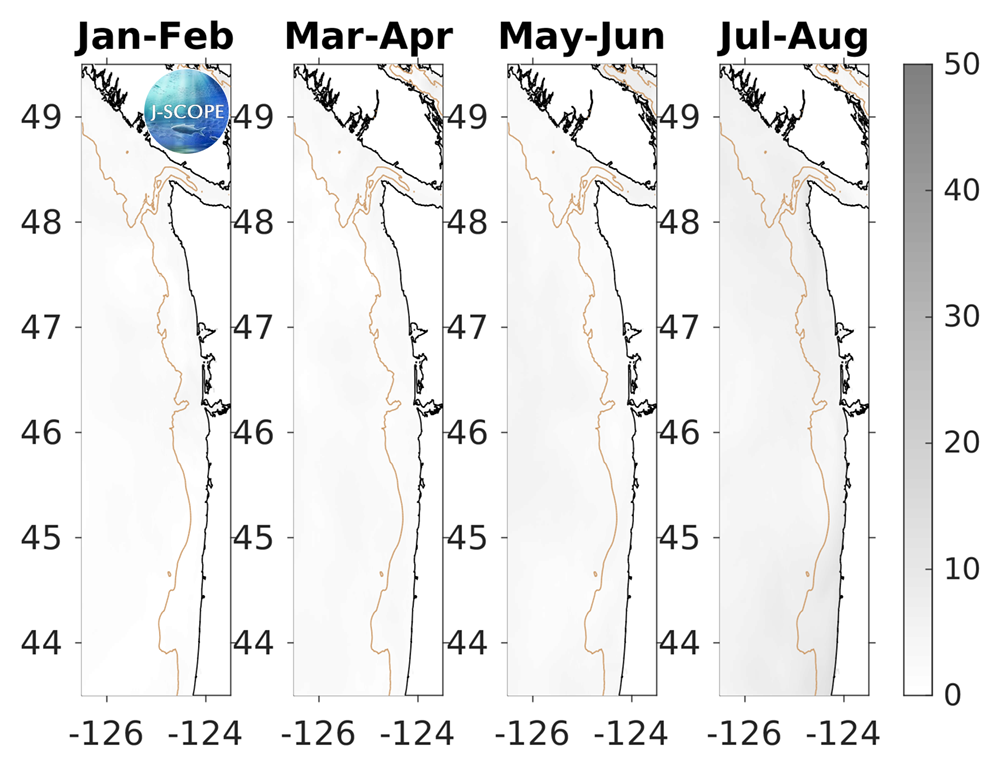
The relative uncertainty in percent for the modeled region SST values averaged in time for (from left to right) January - February, March - April, May - June, and July - August. The relative uncertainty is defined as the standard deviation of the ensemble divided by the mean of the ensemble and is reported as a percentage of the mean.
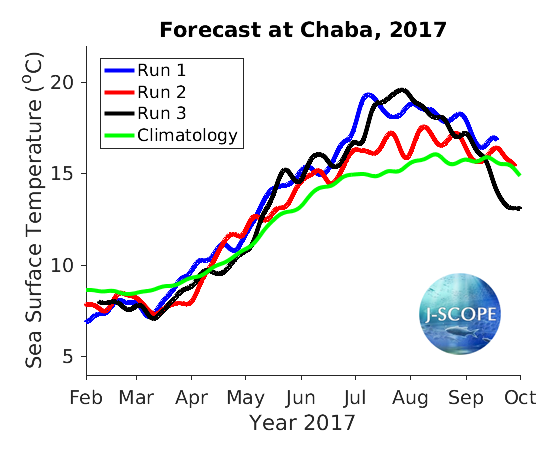
Time series for SST from the outer Washington shelf at Ćháʔba· (~48 N) for each of the 3 ensemble members.
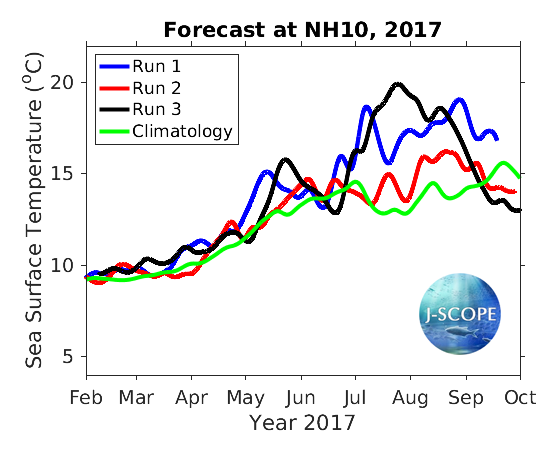
Time series for SST from the mid Oregon shelf at NH-10 (~44.5 N) for each of the 3 ensemble members.

The modeled cross-section from the Newport Line (left) and the Grays Harbor Line (right), averaged over all three ensemble members, and averaged over the summer upwelling months. These cross-sections are anomalies from the climatology.
